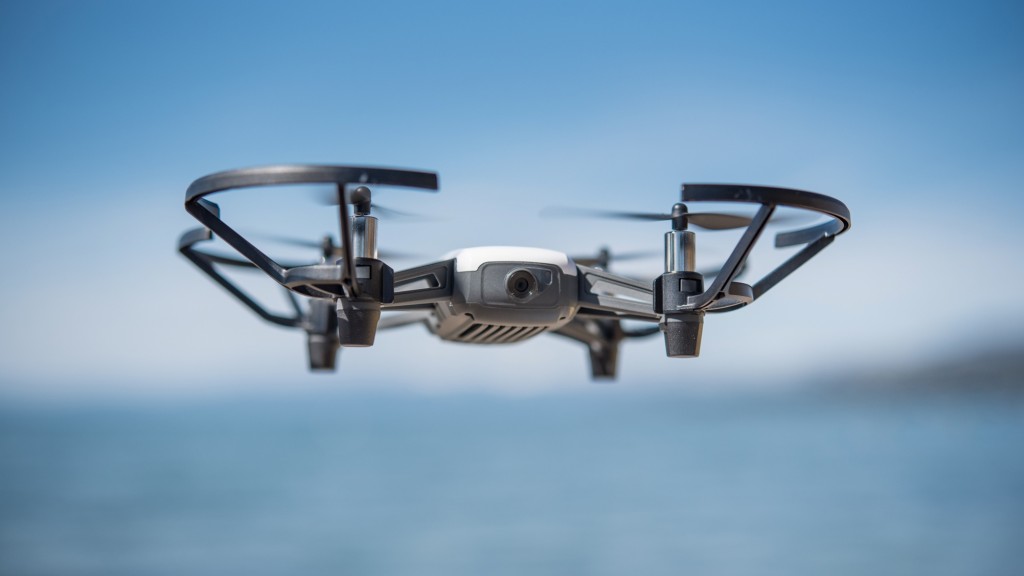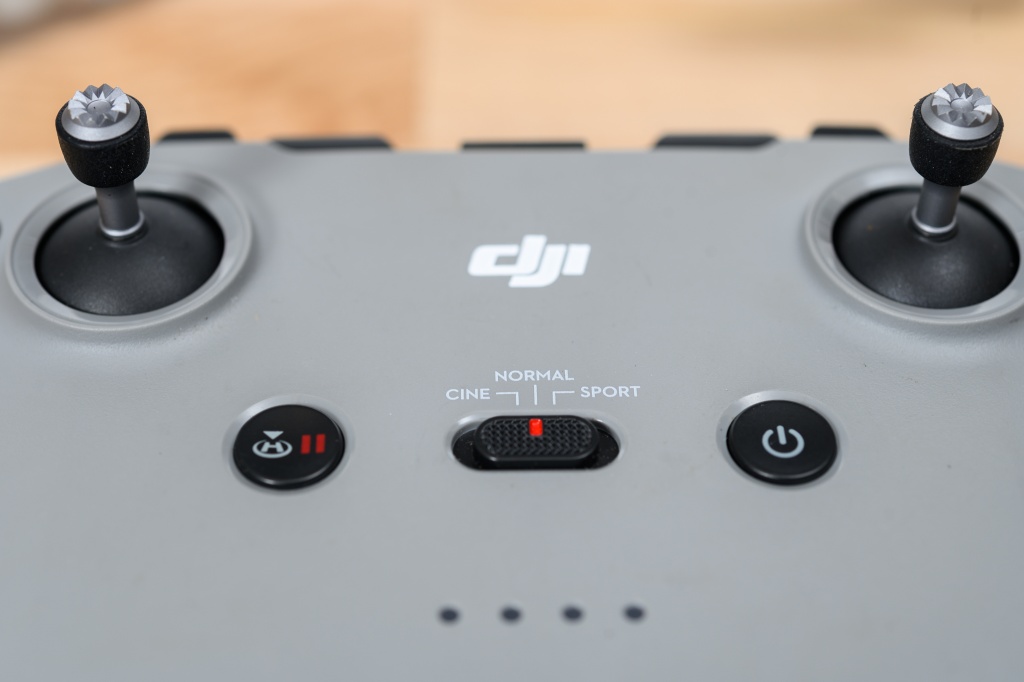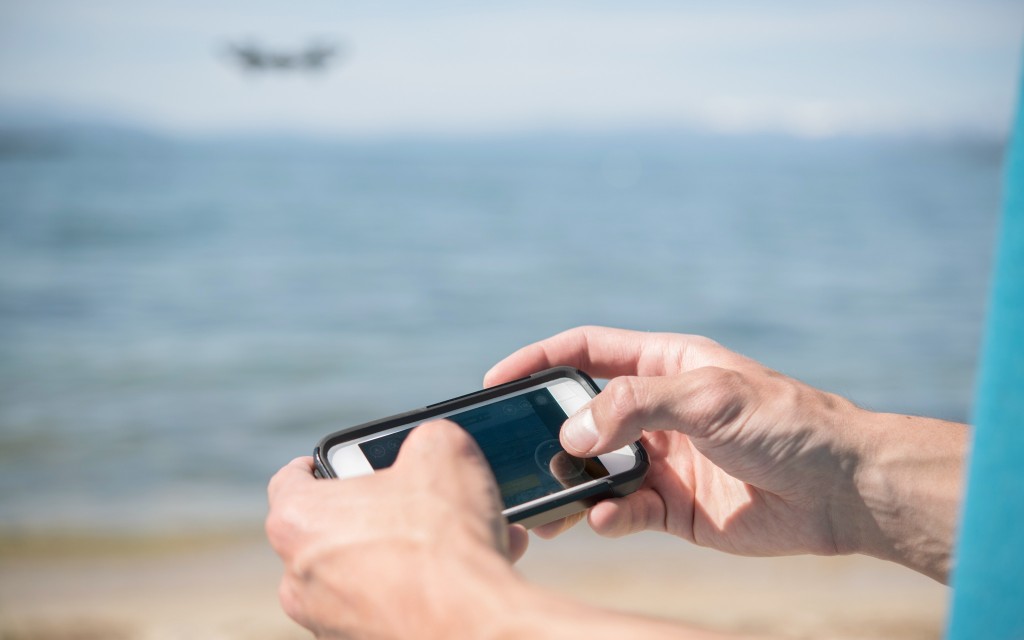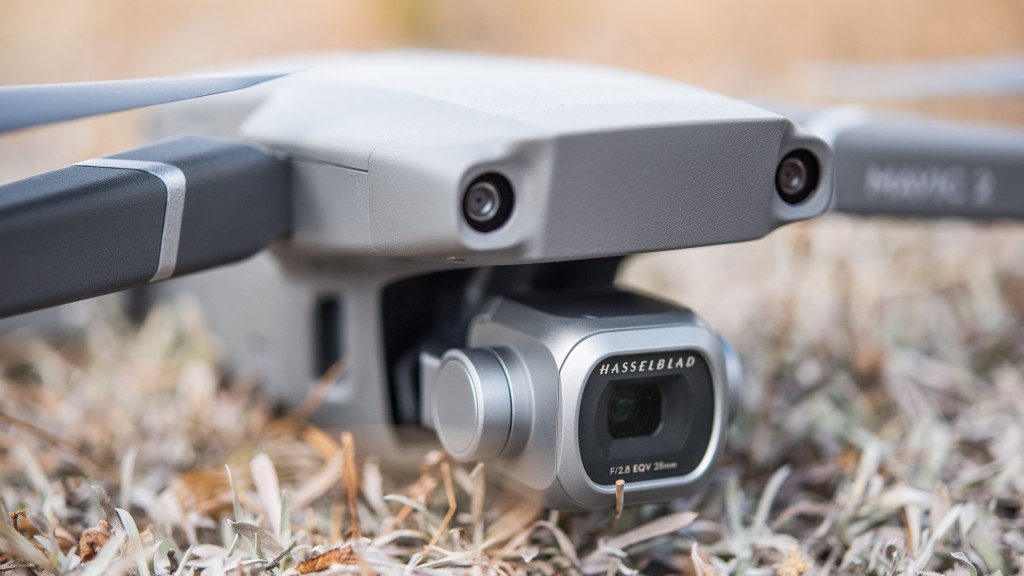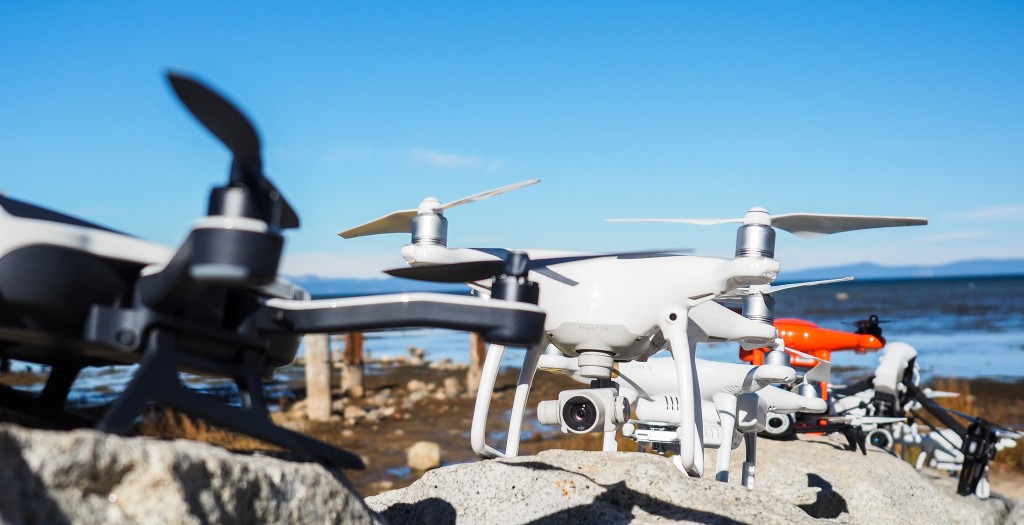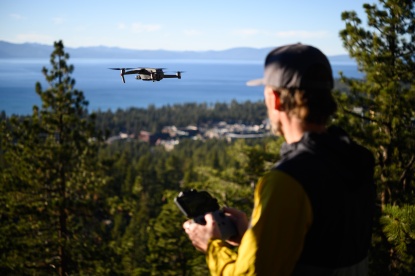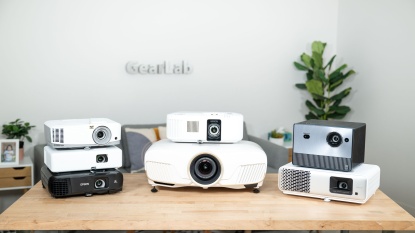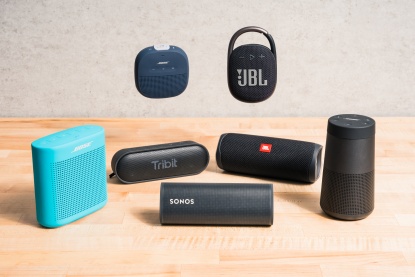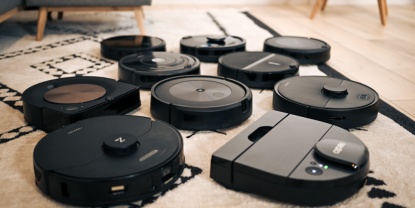If you're interested in a drone, there is a decent chance you had Star Wars bedsheets at some point in your life (we sure did) and thus would enjoy geeking out about the finer points of drone technology. In this article, you will find step-by-step instructions on choosing the right drone for you from our our favorite drones. Then we jump into the minutiae, unraveling all of the jargon and acronyms so you can nail the small talk at your next drone party (that's a thing, right?)
Choosing the Right Drone
Step 1: What Do You Want to Use It For?
Drones are fun, that's a fact, but it is important to hone in on what you will be using yours for before making any big decisions. If you are in the market for fun, then there are plenty of inexpensive, toy-style models that will do the trick. Specialty models that offer a full-on speed racer experience are also available if racing is your prerogative.
The most common usage, and the focus of this review, is on aerial videography and photography. Drones allow amateurs to capture shots that used to be exclusively the domain of Hollywood directors that could afford large cranes or even helicopters. Drones have come a long way since their introduction to society. The footage they are capturing nowadays is so good that the NFL uses them to cover football games. They are becoming more affordable by the day, and these devices can give anyone the ability to capture all kinds of mind-boggling angles.
Step 2: How Good of a Pilot Are You?
While drones tend to be fairly user-friendly, their controls are rarely intuitive to new pilots. Their multi-rotor design requires a computer that makes constant adjustments to keep them stable. Effectively adding flying commands on top of that takes some practice and presents a steep learning curve for beginners.
Higher-end models geared towards capturing high-quality footage often come with gamer-style controllers. These controllers feature joysticks that lend intuitive tactile feedback to the flying experience. This makes flying much easier compared to cheaper models that turn your smartphone's touchscreen into a virtual controller (more on that in a minute). The downside of these high-end models is their cost. As a beginner, the fear of damaging a costly investment affects where you may feel comfortable flying these nifty devices. In this case, it is worth budgeting time for some test flights in wide-open, obstacle-free areas or getting a cheap toy model to practice your skills with. It is worth noting that these cheaper toy models are much harder to fly than the advanced options.
A less expensive camera model provides a less stressful flying experience, both because of its cheaper cost and the fact that its lighter weight makes crashes less consequential — but you make significant sacrifices in video quality and flying performance. Still, they can make a good gift for a young, budding cinematographer that wants to try their hand at some aerial shots.
Step 3: Remote Control or Mobile Device?
Some drones use a smartphone app that turns your touch screen into a controller, while others offer a controller with joysticks and buttons similar to what you might use to play video games. If the device comes with a controller, it usually still connects to your smartphone or tablet, using the screen to display a live stream from the aircraft's camera. Both rely on your smartphone or tablet, but we find the gaming-style controllers to be much easier to use. Not only do the joysticks make you feel more like Maverick cruising around with Goose (may he rest in peace), but they also feel slightly more natural than moving a smartphone around. Additionally, it frees up the entirety of your smartphone screen to display the video you're capturing, creating a more immersive and cinematic experience. Finally, dedicated remote controls tend to have a greater range than the networks used to communicate with mobile devices alone.
On that note, you'll probably find that using a tablet rather than a smartphone in conjunction with your flying camera enhances your experience. This is especially true if you're using the tablet as the remote control, as it provides more screen space to view the live video stream. Even if you have a dedicated remote that uses a mobile device solely as a live stream monitor, you'll probably appreciate the extra viewing space.
Step 4: What Kind of Camera Do You Need?
If you're looking for high-quality video, at the very least, you'll want a model that mounts its camera on a gimbal. A gimbal allows the camera to move independently from the aircraft's body, mitigating all the jerky flight movements of the drone itself, creating smooth, stable video. Cameras that mount directly on the body rather than on a gimble offer some image stabilization but nowhere near the blockbuster-worthy panning shots that gimbals can produce.
In terms of video resolution, it's hard to go wrong — all serious models film in 4K or higher resolution. This full ultra-high definition (four to five times the resolution of 1080p) makes for great viewing and matches the resolution of modern monitors and TVs. If slow-motion footage is your thing, you'll want to get the model that can film at the highest frames per second (fps). This combination provides Matrix-style slow motion at a high resolution.
Finally, you'll want to decide whether you want a camera that is permanently attached to the aircraft or one that is removable. Permanent cameras have the advantage of simplicity and are designed specifically for flying videography. Some models have a removable camera that can be used separately from the drone. This allows for some versatility in the footage you are gathering, but remember: if you lose the camera, your drone becomes just a really expensive toy helicopter.
Step 5: Do You Need Any Accessories?
As we've eluded, drones can be quite pricey, so it is important to take good care of them. If you plan to invest in a quality drone, it is also in your best interest to purchase a carrying case. There are soft cases, hard cases, and even camera bags that will help keep your expensive toy safe and sound. Some people like to take safety to the next level by also adding a neck strap to their controller.
Speaking of delicate machinery, the rotors found on most drones are light, thin, and spin very fast. Whether your drone has taken a tumble or bounced around in your backpack during your travels, rotors are often the first thing that needs replacing. Luckily they are fairly cheap and easy to replace, so it doesn't hurt to have a few spare on hand.
The last accessory we recommend purchasing is an extra battery or even two if you can afford it. Most drone flight times range from 20 to 35 minutes. While 30 minutes is plenty of time to get some fancy B-reel or capture your best buddy sending his climbing project, you'd be surprised how quickly it flies by.
Step 6: Register Your Drone and Educate Yourself About Flying Restrictions
If your drone weighs more than 0.55 pounds, you are required to register it. Federal regulations also prohibit flying in certain areas, namely above 400 feet or within five miles of an airport. The B4UFLY app alerts you of any federal restrictions in your current or planned flight location. You'll still have to double-check any additional state regulations as well.
Step 7: Have Fun!
Time for some positive affirmation. You're smart, you're creative, and you've just obtained a filming tool that Alfred Hitchcock could only have imagined in his wildest dreams. Go make some sweet movies!
Types of Drones
Our step-by-step guide will help most shoppers find the product they're looking for, but chances are you'll run into something you don't understand on your way there. Read on as we dive deeper into drones and their specifications, so you won't be left wondering what all those bullet points on the side of the box mean.
Gimbal Camera Drones
A gimbal is essentially an electronically controlled mount that keeps a camera steady. It both dampens vibrations and actively keeps the camera level. Gimbals help to produce smooth-looking footage and keep the horizon level, even as the aircraft banks, turns, and shakes in the wind. Gimbal models are thus the clear choice for producing high-quality video footage. The majority of the models we tested fall into this category.
Non-Gimbal Camera Drones
Some models do not have a camera gimbal. Instead, they have cameras mounted directly to the body of the aircraft. These models employ some camera stabilization strategies but produce relatively shaky and jerky footage, making them poor choices for videography applications. Most are smaller and cheaper than their gimballed brethren, meaning they can be more easily thrown into a backpack and then used to get a unique angle for a selfie.
Toy Drones
Toy models tend to cost less than $100, are quite small, and are heavily hindered by the weather. Some of these models come equipped with small cameras but are best used for practice or simple recreation.
Racing Drones
Racing models are built to be light and agile. Most have fixed, front-facing cameras that can stream video to a pair of first-person-view goggles (think a virtual reality headset) that allows the pilot to fly as if they're sitting in the cockpit.
Consumer Camera Drones
We place a lot of our focus on these types of drones which typically have four rotors. They provide a high-quality aerial videography platform at a price that doesn't require taking out a loan or starting a Kickstarter campaign.
Professional Camera Drones
Some professional drones come with a camera, while others offer a mount to affix your professional-level camera. This is where things get expensive. Often these models have more than four rotors so that losing one engine won't result in all that expensive equipment crashing to the ground. They also often have two separate controls, allowing one person to be the pilot while another controls the camera (this feature has begun to make its way into consumer models as well). Freefly Systems is one of the leading providers of professional-level rigs if you're curious what they're all about.
Terminology
The world of drones is filled with many arcane terms and TLA's (three-letter acronyms). Here we'll go over some of the more common ones so you won't be left in the dark.
Whats a UAV?
UAV is an acronym for an unmanned aerial vehicle. It is a general, all-encompassing term that applies to everything from the small models you're considering buying to huge military aircraft. You'll notice that the FAA uses the even more general term unmanned aircraft system (UAS) in all of their legalese, most likely to cut down any unforeseen loopholes.
RTF vs. DIY
RTF is an acronym for ready to fly. All of the models we tested are RTF as they require only minimal construction (popping on the rotors) upon purchasing. RTF is certainly the way to go for beginners, and even the most experienced pilots will favor RTF models. However, if you become enamored with the incredible aerodynamics of your hovering companion, you may find great pleasure in a DIY (do it yourself) model. These models range from curated kits that facilitate the joy of building something yourself to models built piece by piece from scratch — including all of the computer coding required to keep the vehicle level. How far you want to take your DIY antics can turn UAV flying from a hobby to a lifestyle.
What's a Quadcopter?
The term quadcopter simply refers to an aircraft with four rotors. Most models available on the market are quadcopters because this is the simplest design that allows for effective maneuvering. By spinning two of the rotors clockwise, and the other two counterclockwise, quadcopters can create torque to turn in any direction. The addition of more rotors increases lift power and capacity and provides redundancy in case an engine fails but does not increase maneuverability.
Autonomous Flight Modes
Many models offer guidance features that make flying and capturing the perfect shot much easier. Some have a tap-to-fly feature, which automatically brings the drone to a hover a few feet off the ground. As liftoff is one of the most tenuous and potentially hazardous moments in any flight, this can remove quite a bit of stress. Some allow you to plot GPS waypoints on your phone or tablet and then have the drone automatically follow that course. Other models can follow a subject using visual tracking or follow whoever is holding the controller. There are also fun orbit functions, which automatically create a 360˚ panning shot around you. That is sure to be the perfect climactic shot in the short film chronicling your dream climb to the top of Mont Blanc, or at least rake in the Instagram likes.
There are also some navigational features meant to prevent loss or damage to your new investment. Return to home, or RTH, functions can automatically bring a vehicle back to its starting point when it is low on battery or has lost connection with its controller. While they are a good fallback, RTH functions are not foolproof, and we would not recommend using them as a standard way to bring your drone back. Most models allow you to enter in-flight restrictions in terms of maximum height (400 feet is the maximum altitude allowed by the FAA) and distance from the controller. Some have a hover-in-place feature, which can operate like a panic button. If you feel like you're losing control, hit the hover button, and the vehicle will stop as quickly as possible and calmly hover in place. Newer models offer obstacle avoidance that will halt the flight if there is an obstacle in its way. Due to a lack of side sensors, this only works if you're flying directly forward. If you're flying to the side to capture that dramatic pan left, it'll never see that tree coming.
Return to Home: Only for Emergencies!
Return to home (RTH) functions are great to have as a failsafe, but they should be used as just that: a last resort. No manufacturers recommend using RTH for anything but emergencies (though some of the advertising may imply otherwise). Common emergencies include a loss of signal, dangerously low battery, or a loss of visual contact. Using RTH generally causes the drone to automatically ascend to a higher elevation, then use GPS to fly back to its take-off point. While this often can work seamlessly, it can also end with a crash into an unforeseen obstacle or an inopportune gust of wind. Some of the pilots we consulted with jokingly called this the "return to manufacturer" feature. It is much better to get into the habit of piloting your drone back yourself, putting it into a hover near the ground, and hitting the land button. The bottom line is that all of these drones have the potential to cause physical harm or property damage and should thus only be used in a safe manner per the manufacturer's recommendations.
Video Storage
Most models store video on a micro secure digital card. Luckily, large capacity micro SD cards have become quite cheap, as 4K and 5K video can quickly chew through storage space. Some models beam footage to your phone or tablet and use that device's memory for storage which means you'll have to clear out some storage space before you start flying (it might be painful to delete those new Stranger Things episodes or, worse yet, Candy Crush Saga).
Don't Be That Person
We'd like to leave you with the last bit of advice: be respectful. Small unmanned aerial vehicles are quickly developing a stigma for being a tool of privacy invasion. In fact, there is an entire episode of Parks and Recreation concerning privacy invasion, and UAVs were one of its centerpieces. And, let's face it, even if it really was an innocent change in wind direction that sent your flying camera over your neighbor's fence in full view of their jacuzzi, can you blame them for assuming the worst? So be conscientious and cognizant of where you are flying to avoid these types of situations. Please don't ruin the experience of fellow hikers by firing up what sounds like a flying weedwhacker while they're trying to enjoy the tranquility of an alpine lake. A UAV ban has been placed on all US National Parks due to this type of behavior, and other land management agencies are warning UAV pilots not to interfere with wildfire fighting efforts. Try your best to ensure small UAVs are seen in a positive light rather than stigmatized, so the full bore of this accessible technology can be used to make the world just a little bit better. Speaking of making things better…
Other Small UAV Applications
Small, inexpensive, unmanned aircraft are set to be a revolutionizing force in many industries. One of the most exciting and heartwarming developments is the fact that there are entire organizations dedicated to advancing conservation efforts through using aerial vehicles to extend and streamline ecological monitoring and data collection. There is even a movement to crowdsource personal UAVs to assist in search and rescue operations. They are being used in several different industries such as agriculture, structural inspections, and real estate. Long story short, if you want to be on the cusp of the future, it won't hurt to learn a bit more about drones.



